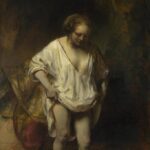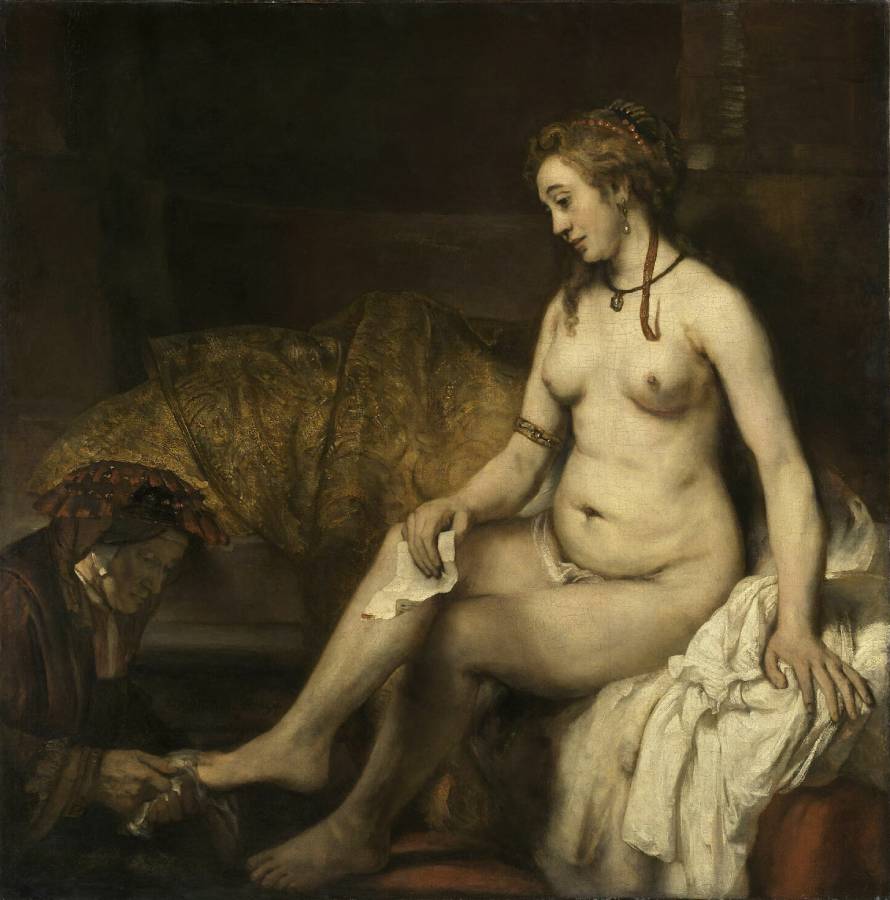Rembrandt (1606-1669)
Bathsheba at Her Bath
1654
Oil on canvas, 142 x 142 cm
Musée du Louvre, Paris
Subject taken from the Bible (II Book of Samuel, the importance of the letter delivered to Bathsheba, the strong point of an entire iconographic renewal of the theme, dear to the Nordics of the 17th century. (Rubens, Lievens, Bronckhorst, Drost, see R.F. 1349, cf. Sluijter, p. 340-352). Jean Cailleux’s interpretation (1945 then 1969), Bathsheba receiving a letter announcing the death of Uriah sent to war on purpose by David, and regretting having cheated on her husband with David, seems adventurous (no second message in the Bible; iconographic tradition of Bathsheba’s bath). Significant pentiments visible on the x-ray showing that Bathsheba’s head was less tilted originally. David’s absence effectively focuses attention on Bathsheba (Tümpel [1968]). It is often considered that H. Stoffels (see INV. 1751) posed for the figure of Bathsheba, Rembrandt remaining here in the spirit of great history painting, beyond a simple genre painting and of a pure nude study. (Louvre)
Compare:
 Rembrandt (1606-1669)
Rembrandt (1606-1669)
A Woman bathing in a Stream
1654
National Gallery, London
See also:
• Stoffels, Hendrickje (1626-1663)
